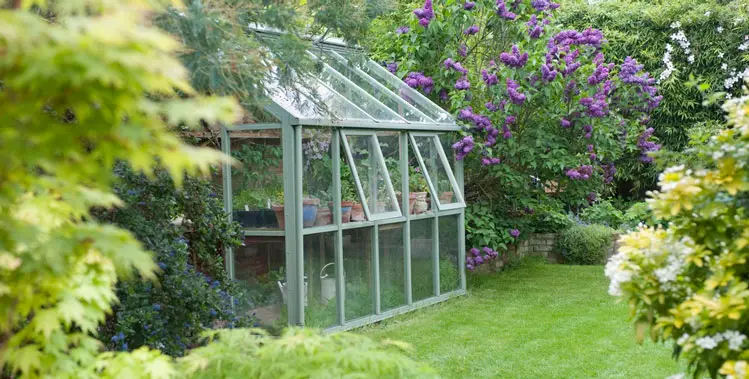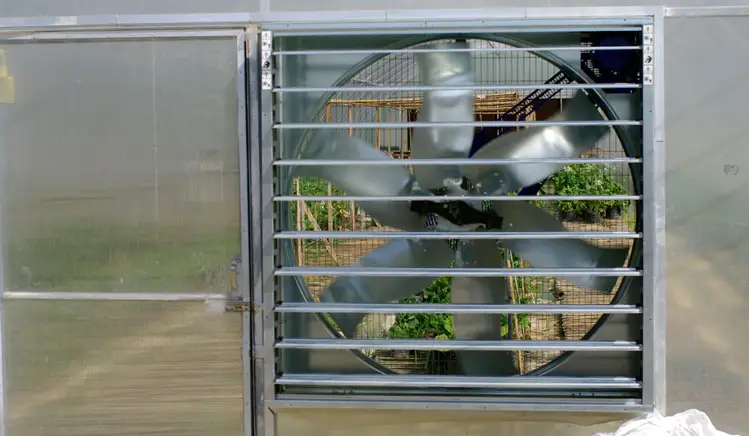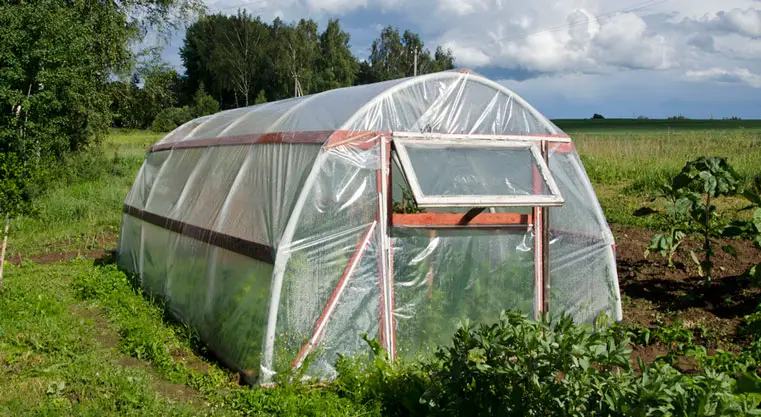How to Keep Your Greenhouse Cool in the Summer?

This post follows our research editorial guidelines.

Even if you’re growing high-temperature crops, such as melons, cucumbers and tomatoes, in your greenhouse, remember they also have a limit. If the temperature in your greenhouse rises too high, not only will your plants’ growth and production be affected, but it will also become hard for you to work under the greenhouse shield.
If you’re like me, who loves spending time in your greenhouse, no matter what season, then summers can be a hassle if your temperatures rise too much. Before you start hating summers for the tough time, here you’ll find out how to keep your greenhouse cool this summer!

Table of Contents
How to keep your greenhouse cool in the summer?
Using a portable air conditioner, shading your greenhouse, monitoring temperature, increasing ventilation, and watering routine are foolproof ways to cool your greenhouse in the summer without hassle. Choosing any of these methods will offer quick results that are crucial for your plants’ survival in summer.
5 effective ways to keep your greenhouse cool in the summer
Worried about the rising temperature of your greenhouse? Fear not; here are the 5 most effective ways to keep your greenhouse cool in the summer:
Monitor temperature
Sometimes the temperature is too high for your plants, even if it’s not apparent to you while tending to your plants. If you don’t want to damage your plants by exposing them to a high temperature, you must monitor your greenhouse temperature regularly. Installing a thermometer inside your greenhouse is the easiest way to know the exact temperature of your greenhouse. It can help you decide if you need to decrease or increase the temperature for the optimal growth of your plants.
Your greenhouse temperature shouldn’t exceed 90 degrees Fahrenheit or 36 degrees Celsius or it will be too hot for your plants’ healthy growth and survival. The ideal greenhouse temperature during summer is 80 to 85 degrees Fahrenheit or 26 to 29 degrees Celsius. This will ensure that even cool weather vegetables remain comfortable while allowing others to thrive.
Improve ventilation
Worried about your greenhouse temperature when you’re away? A remote temperature monitoring system will solve the issue as you can monitor your greenhouse temperature anywhere using your smartphone or mobile device. The one that I have links to an app on my phone which makes it easy to check in throughout the day and get notifications when the limits i’ve set are hit. Some don’t just check the temperature, they also allow you to change the temperature settings remotely. So, if you want more control over your greenhouse temperature remotely, temperature monitoring systems are extremely helpful.
The temperature inside your greenhouse will always be higher than the outside temperature by 10-20 degrees Fahrenheit. So, your plants might suffer from heat while you assume the greenhouse environment is safe for them. A ventilation system will ensure good airflow inside your greenhouse, allowing you to easily track the temperature and humidity inside.

You can improve ventilation in your greenhouse both naturally and mechanically. Natural ventilation is cost-effective and can be done by opening the base and side vents. If your greenhouse is too hot, you can also open the roof vents. If you don’t visit your greenhouse regularly, you can get automatic vent openers that open the vent themselves when the temperature rises in your greenhouse. The mechanical method uses exhaust fans and improves the airflow quickly, which will reduce the heat in your greenhouse faster than natural ventilation.
Now, how will you decide which one is better for you? Well, it depends on the size of your greenhouse. Natural ventilation is typically enough and is effective if you have a small greenhouse, but for medium and big-sized greenhouses, natural ventilation will not cool down the greenhouse quickly. So, you have to opt for mechanical ventilation, depending upon the size of your greenhouse.
Increasing watering routine
Increasing the watering routine will lead to an increase in evaporation rate, which will increase humidity in your tank and decrease the temperature. Your greenhouse temperature can fall by 10-20 degrees Fahrenheit if more vapours are formed in your greenhouse.
There are two ways to increase the moisture level in your greenhouse, and these are either water the plants more often or wet the hard surfaces such as paths. When water evaporates, it will cool your greenhouse and the temperature will drop over time. Increased moisture in your greenhouse will not only cool your plants but also protect them from pests that love dry conditions, such as red spider mites.
Wondering how often you should water your plants or hard surfaces to keep your greenhouse cool? The great news is as often as you can, but one time a day will definitely not be sufficient. During summer heat water will evaporate quickly compared to the colder months, so you should water your plants in the morning or evening after the sun goes down.
Get a portable air conditioner
If you have it in the budget, you can consider getting a portable air conditioner for your greenhouse. It will be an expensive but effective way to cool your greenhouse without much effort.
A primary benefit of portable air conditioners is that they can be moved out of the greenhouse when you’ve acquired the ideal temperature. Plus, they often come with an installed dehumidifier to make things easier for you. They will take care of both the humidity levels and temperature in your greenhouse.
If you choose this, no time will be wasted on setting up complicated venting systems to cool your greenhouse. No installation is required, just keep the exhaust pipe out of the greenhouse through a window or make a hole in the greenhouse. Relax and let your portable air conditioner does all the work for you!
While this method is expensive you will considerably reduce the effort to control the temperature in your greenhouse. This option also allows you to hook up a temperature sensor for some cooling automation!

Create shade to avoid direct sunlight
Shading your greenhouse is a cost-effective method that will quickly reduce your greenhouse temperature. But, before you rush to shade your greenhouse, remember your plants also need sunlight. So, this method is a bit tricky and you have to do it correctly to save your plants from heat while providing them the sun they need to flourish.
Fortunately, the shade cloths for greenhouses are available in different densities that are calculated in percentages, for example, 90% or 30%. Confused about how you’ll decide the best density that can save your plants from heat while letting them grow in the sun? It’s easy as all you have to do is check your plants’ sunlight requirements and your local climate.
To make it easy for you, i’ve included the following percentages of sunlight coming through the cover needed for proper growth according to the plant type:
- Vegetables: 30 – 50%
- Other regular plants: 50%
- Ferns, orchids, etc: More than 50%
While choosing the perfect shade for your greenhouse, consider the shade’s material as well. The best materials are aluminet, polypropylene and polyolefin.
Final Thoughts
Ready to rescue your greenhouse in this hot season? Get help from any of these tips, stick to it, ask experts, and don’t stop until your greenhouse attains a normal temperature that is safe for your plants!
Happy summer gardening to you!
